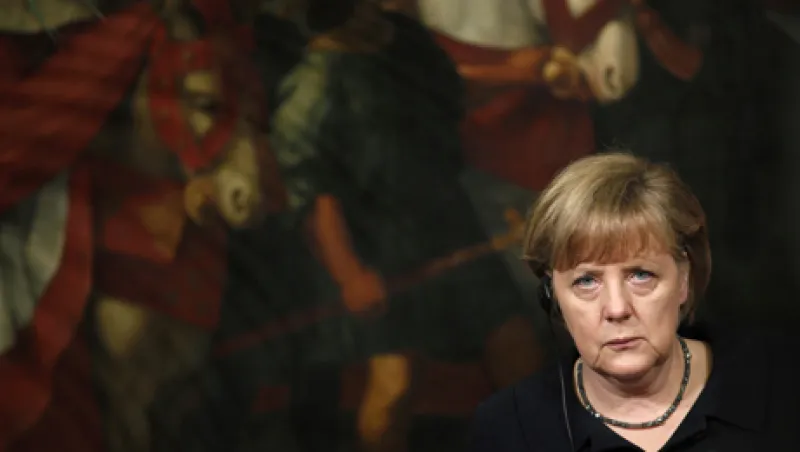The euro zone looks likely to fall into recession this quarter, judging by Thursday’s closely watched survey of the state of the currency union from Markit Economics.
Markit’s Purchasing Managers’ Index (PMI), which measures the performance of the manufacturing and services sectors, pointed to the seventh straight monthly fall in activity.
“The August Markit Euro Zone Flash PMI reinforces the prevailing view of the economy dropping back into recession during the third quarter of 2012,” said Rob Dobson, economist at Markit. “Taken together, the July and August readings would historically be consistent with GDP [gross domestic product] falling by around 0.5 percent to 0.6 percent quarter-on-quarter, so it would take a substantial bounce in September to change this outlook.” Thursday’s “Flash” index is a provisional reading, but tends to a show a similar picture to the final index that appears a week later.
“We expect the euro area crisis to reignite after the summer holidays, with GDP contracting at the rates currently suggested by the PMIs until around the end of the year,” said Bank of America Merrill Lynch in response to the figures. The bank sees the PMI numbers as consistent with an output decline of about 0.5 percent — broadly in line with Markit’s own assessment.
The continuing retreat in activity mainly reflected falls in new business, according to Markit. Companies continued to cut employment — a sign that they do not expect an upturn in the near future.
Manufacturing declined at a much more rapid rate than services, with the manufacturing output index at 44.6 and the services index at 47.5. Any figure below 50 signifies a decline. Any number below 45 has, historically, tended to be followed by official data for the same period showing steep falls in the sector’s output.
Manufacturing exports were particularly worrying, with the steepest slide in new orders since November.
A slew of data this month has pointed to a global slowdown in international trade, with different economies feeding negatively off each others’ weaknesses in a vicious circle. Wednesday numbers show that Japanese exports have fallen at their most rapid rate in six months, and figures published earlier in August suggest Chinese exports expanded by only 1 percent year-over-year in July — also a six-month low. Thursday’s HSBC bank PMI for China, compiled by Markit, indicated that in August new export business declined at its fastest pace in more than three years.
However, the relatively strong performance of France offered one silver lining to the gloomy cloud of Thursday data. Although France’s PMI number of 48.9 for manufacturing and services combined pointed to a continuing decline, the number was a one point improvement from July. It suggests the French economy is shrinking at its slowest rate since February, and has reached a point close to stability.
The state of the French economy is particularly eagerly perused by institutional bond investors. They hope that if large states on the euro zone periphery — notably Spain or Italy — need a comprehensive bailout, the more robust states in the euro zone core would have the funds to finance it. If signs of French instability hinted that the euro zone’s second-largest economy was no longer within the robust core, and was even careering towards the periphery, investors would fear that the depleted core — based on Germany and wealthy but fiscally insignificant member states such as Finland and the Netherlands — would not be big enough to bankroll the augmented periphery.
Yields on French government 10-year bonds edged down 3 basis points (bp) to close at only 2.11 percent at the end of European trading on Thursday — a negative rate in real terms after allowing for euro zone inflation of 2.4 percent. They have fallen 103bp since the beginning of the year. The return of French bonds to safe-haven territory — compared with yields as high as 3.7 percent in late 2011, at the height of worries about the Fifth Republic’s finances — reflects an increased faith in France’s underlying economy. It also betrays a sense that fears of profligate government spending under the new president since May, François Hollande, have not been realized.
The composite euro zone figure of 46.6 for manufacturing and services together was broadly similar to July’s number — indicating that output declined at a similar pace to last month.
The Eurofirst 300 index of euro zone equities responded to the weak numbers by closing 0.6 percent down on the day at 1,089.






